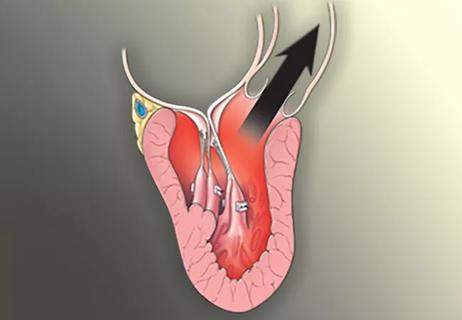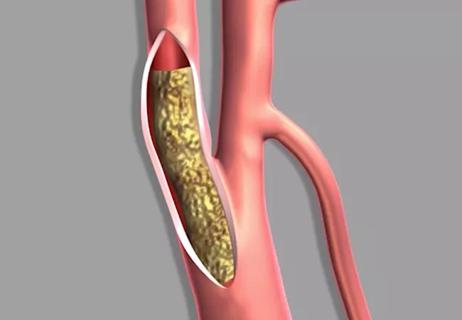Cohort study shows benefits are greatest for highest-acuity cases

The availability of a multidisciplinary pulmonary embolism response team (PERT) was associated with improved patient outcomes, including 30-day inpatient mortality, in the first published study of outcomes among all patients with pulmonary embolism (PE) before and after the launch of a PERT in a tertiary care hospital. Moreover, patients with more severe PE appeared to derive the greatest benefit from PERT availability.
Advertisement
Cleveland Clinic is a non-profit academic medical center. Advertising on our site helps support our mission. We do not endorse non-Cleveland Clinic products or services. Policy
“Despite the gradual adoption of PERTs over the past few years, the impact of these teams on patient outcomes has remained elusive,” says Cleveland Clinic Vascular Medicine Section Head John R. Bartholomew, MD, senior author of the study, which was published in the American Journal of Cardiology (2019;124:1465-1469). “We set out to shed some light on that impact with this retrospective analysis from our experience with Cleveland Clinic’s PERT.”
Since the first description of a PERT in 2013, these multidisciplinary teams have been adopted by more and more institutions to aid in rapid risk stratification of patients with acute PE and to streamline execution of a management strategy.
The PERT concept grew out of a void left by current guidelines, which do not clearly outline treatment for acute PE, particularly for massive and submassive cases. As a result, decision-making around management can lack consistency. To address this challenge, PERTs assemble a diverse group of clinicians — from vascular medicine, cardiothoracic surgery, pulmonary and critical care medicine, interventional radiology, chest radiology, internal medicine, hematology, emergency medicine, cardiology, pharmacy and other disciplines — to provide rapid evaluation, risk stratification and management recommendations for patients with acute PE. The aim is to foster a diversity of viewpoints in patient evaluation, with an eye toward swift initiation of optimal therapy.
“The PERT allows rapid mobilization of a dedicated multidisciplinary team for patients newly diagnosed with a massive or submassive PE,” explains Cleveland Clinic cardiothoracic surgeon Michael Tong, MD, a study co-author. “Within an hour, patients are evaluated and targeted treatment is decided. If interventional or surgical treatment is felt to be the best option, patients quickly move on to treatment.”
Advertisement
Cleveland Clinic’s PERT was launched in July 2014. The current study was conducted to compare outcomes of all patients with PE at Cleveland Clinic’s main campus before and after launch of the PERT. Consecutive adults admitted with CT-diagnosed acute PE in 18-month periods before and after PERT implementation were retrospectively identified and analyzed.
The 343 patients in the pre-PERT era and the 426 patients in the PERT era were statistically comparable in terms of age, sex, malignancy and concomitant deep vein thrombosis diagnoses. Differences between the groups consisted of significantly higher prevalences of existing cardiopulmonary disease, elevated cardiac biomarkers and right ventricular dysfunction in the PERT era, as well as significantly higher Pulmonary Embolism Severity Index (PESI) scores in the PERT era.
The PERT team was directly involved in the care of 12.5% of patients during the PERT era.
Analysis of outcomes showed that patients in the PERT era had lower rates of the following relative to their counterparts in the pre-PERT era:
Additionally, the PERT era saw a shorter time to therapeutic anticoagulation (12.6 hours vs. 16.3 hours; P = 0.004) and a trend toward increased use of catheter-based or systemic thrombolysis (P = 0.07).
The differences in outcomes before and after PERT implementation were most pronounced among patients deemed to be at intermediate and high risk; for instance, mortality in this subgroup was 5.3% in the PERT era versus 10.0% in the pre-PERT era (P = 0.02).
Advertisement
“The most important finding from our study may be the reduction in inpatient and 30-day mortality during the PERT era, which to our knowledge is the first demonstration of such a result in a published study,” says Dr. Bartholomew.
Also notable, says co-author Gustavo Heresi, MD, of Cleveland Clinic’s Department of Pulmonary and Critical Care Medicine, is the finding that the benefits of PERT availability were magnified among patient at higher risk levels — i.e., intermediate and high risk. “Higher-acuity patients appear to have benefitted most,” he notes.
Dr. Heresi adds that it’s important that while the proportion of patients undergoing advanced management — defined as systemic or catheter-directed thrombolysis, aspiration thrombectomy, surgical embolectomy or venoarterial ECMO — increased after the PERT launch, it still remained low, at less than 6%. “The rise of PERTs had prompted concern that they might lead to overuse of invasive techniques, but this is not what we observed in our cohort, even though the PERT was involved in the care of most PERT-era patients who underwent some form of advanced therapy,” he says.
Notably, none of the 23 PERT-era patients who underwent advanced therapy suffered inpatient or 30-day mortality. “This, together with the reduction in IVC filter use in the PERT-era cohort, following the 2015 publication of the PREPIC2 study, suggests that the availability of the PERT may result in improved patient selection for advanced procedures,” says Dr. Bartholomew.
Advertisement
“An additional benefit for patients is that, after initial therapy, they then receive long-term follow-up by the PERT team for both prevention of new disease and treatment of residual disease,” notes Dr. Tong.
Advertisement
Advertisement

Blood test can identify patients who need more frequent monitoring or earlier surgery to prevent dissection or rupture

Study authors urge reevaluation of the sweetener’s safety designation by food regulators

Surprise findings argue for caution about testosterone use in men at risk for fracture

Findings support emphasis on markers of frailty related to, but not dependent on, age

Additional analyses of the two trials presented at 2023 ESC Congress

Prospective SPIRIT-HCM trial demonstrates broad gains over 12-month follow-up

Review of our recent experience shows it’s still a safe option

Machine learning may improve risk prediction and guide therapy